Welcome to the definitive guide on the “17 Main Types of Marketing Strategies” ⚡. It’s a vibrant ecosystem out there, full of different marketing approaches. But which one is right for your business? We’ve sifted through the complexity and brought you a distilled list of strategies – each with individual tasks and goals.
From Content Marketing, that’s all about engaging audiences through value-packed content, to Influencer Marketing, leveraging the power of popular personalities – we cover it all. Even the powerhouse of Email Marketing, known for its unbeatable ROI, appears.
Our ultimate aim? To empower you to navigate the marketing landscape like a pro, equipped with strategies that resonate with your brand and audience. Utilize this knowledge with tools like Plerdy, a robust UX & SEO analysis platform, to make data-driven decisions and ace your marketing game.

So, buckle up and prepare to dive deep into the dynamic world of marketing strategies – a journey that promises to fuel your business growth and unlock unprecedented success!
What Is A Marketing Strategy?
Transform your business today with a robust marketing strategy, an indispensable tool for any brand seeking to dominate its niche.
This strategy encapsulates everything from conducting market research, understanding your target audience, and setting objectives, to building a brand image. It’s an all-encompassing road map – aiming to attract, capture, retain, and delight customers.
Take, for instance, the successful marketing strategy of tech giants like Apple:
- But, first, they identify and understand their target market – the tech-savvy, aesthetics-conscious consumer.
- Second, their product design and development are meticulously tailored to their customer’s tastes.
- Lastly, Apple crafts a compelling narrative around its products, instilling a sense of aspiration and exclusivity.
With a deep understanding of the market, Apple leverages its marketing strategy to continuously innovate, communicate, and connect – driving unparalleled customer loyalty.
This is the power of a marketing strategy. It’s a fine-tuned mechanism that ensures your marketing efforts hit the right note, maximizing ROI and propelling your brand to unprecedented success. It’s a journey, a process, and most importantly, it’s a decision – a decision to fully comprehend your audience, communicate effectively, and create value that resonates.
Top Tips For Creating Successful Marketing Strategies
Transform your business vision into reality with a powerful marketing strategy. Here are some top tips for setting your marketing strategies on the path to success:
- Grasp Your Market: Conduct thorough research to grasp your market landscape. Uncover the needs, preferences, and behaviors of your audience. This critical step provides vital insights to align your offerings and messages.
- Set Clear Objectives: Define clear, measurable goals – this helps track progress, ensure accountability, and maintain strategic focus.
- Diversify Your Approach: Avoid putting all your eggs in one basket. Instead, use a mix of marketing channels – from digital to traditional, to reach a broader audience.
- Consistently Evaluate: Regularly measure performance, adjust tactics, and adapt your strategy based on results. Flexibility is key in today’s ever-changing market dynamics.
- Brand Storytelling: Weave a compelling brand story that resonates with your audience. This is a proven method to connect emotionally with consumers, as demonstrated by Starbucks, which successfully uses storytelling to share its commitment to ethically sourced coffee.
Strategic planning is the backbone of successful marketing – it’s about being organized, proactive, and innovative. With the right strategy, you’re well-equipped to conquer your market, creating a ripple effect that drives growth, amplifies brand awareness, and enhances customer engagement.
Why Is It Important To Have A Marketing Strategy?

A rock-solid marketing strategy isn’t a luxury – it’s a necessity. Acting as your business’s compass, it directs your marketing efforts toward the right audience with the right message at the right time.
Consider a marketing strategy as the architect of your business growth. It streamlines efforts, eliminates guesswork, and leads you on a path of planned action – rather than random attempts. Here are a few reasons:
- Clear Direction: With a strategy, you know where you’re headed. It sets out clear, attainable goals for your marketing efforts.
- Optimized Resources: It ensures you use your resources efficiently, getting the most bang for your buck.
- Consistent Branding: With a clear message and tone, your brand voice echoes consistently across all channels.
Take Amazon as an example. They recognized the digital shift early, crafted a strategy centered on user convenience, and implemented it flawlessly. Now, they’re the go-to destination for online shoppers.
Your marketing strategy should be the heartbeat of your business. It’s not just about launching flashy campaigns; it’s about ensuring every marketing move is intentional, measured, and tied to a broader objective. Essentially, it’s your blueprint for business growth, your path to profitable customer relationships, and your guide to navigating the challenging seas of market competition.
How To Choose a Marketing Strategy
When selecting a marketing strategy, one size does not fit all. Instead, your business needs a custom-tailored approach, like a well-cut suit – it should fit perfectly, flatter your business’s strengths, and camouflage any shortcomings.
Here are some key considerations for picking your marketing strategy:
- First, know Your Audience: Understanding your target market’s needs, preferences, and behaviors lays the groundwork for effective communication.
- Define Your Unique Selling Proposition (USP): Carve out a unique space for your brand in the market. Your USP sets you apart and draws in your target audience.
- Consider Your Budget: Map out your financial resources. A realistic budget shapes the scope and reach of your marketing activities.
- Leverage Technology: Use technology to your advantage. Digital marketing tools can maximize reach, track performance, and provide valuable insights.
Remember, Nike’s ‘Just Do It’ campaign resonated with a wide audience and established the brand as a sportswear maker. Success requires picking the right marketing plan. Establish a plan that captures your brand essence, engages your audience, and propels your organization.
Traditional Marketing Strategy
1. Direct Marketing Strategy
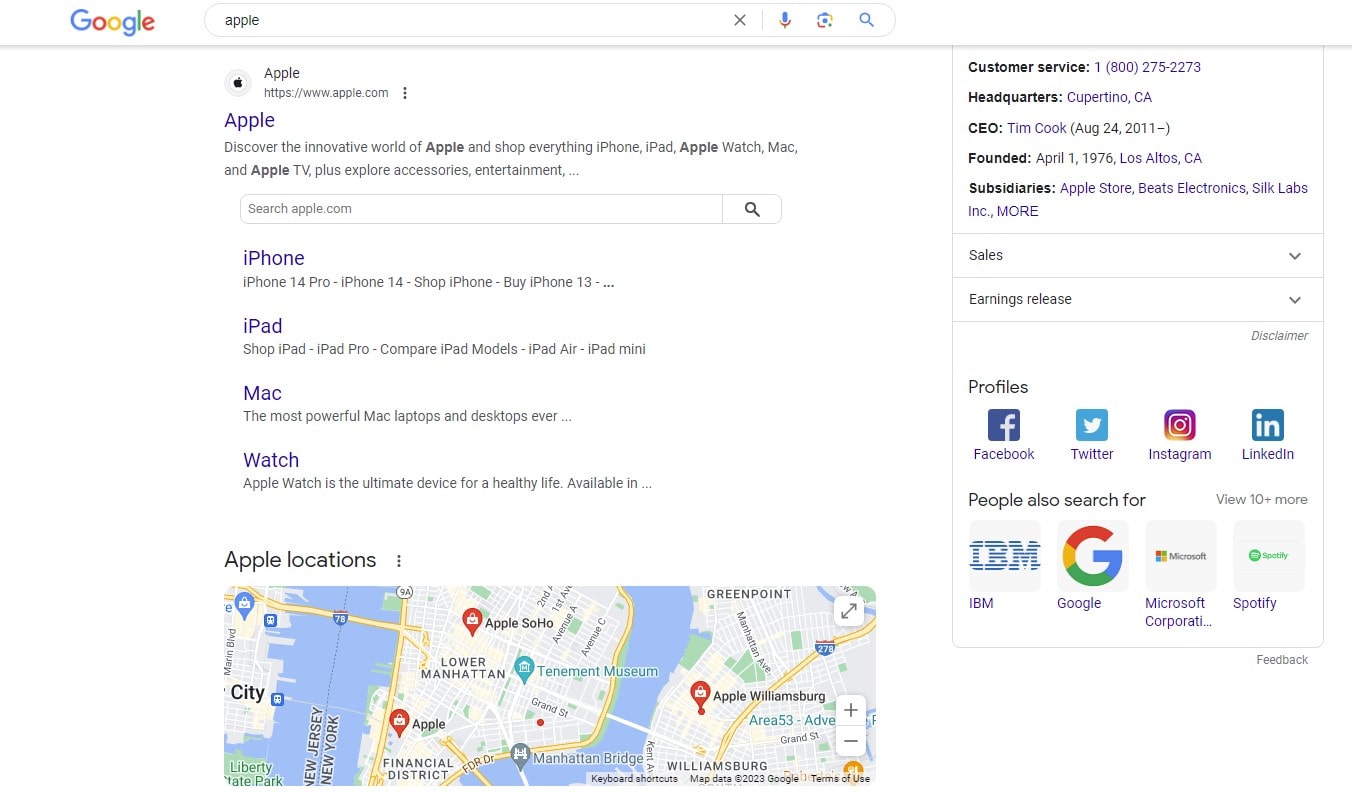
Direct Marketing is a potent strategy that zeroes in on individual customers, providing a personalized experience that builds robust connections. This type of marketing brings the conversation right to the customer’s doorstep, enveloping them in a tailored narrative that aligns with their needs and preferences.
Let’s break down the nuts and bolts of direct marketing:
- Personalized communication: Businesses reach out to customers individually, crafting messages that resonate on a personal level.
- Prompt action: The strategy employs compelling call-to-actions, driving customers to take immediate steps — purchasing, subscribing, or simply engaging with the brand.
- Measurable results: Unlike many marketing approaches, direct marketing allows for precise tracking of response rates, making ROI evaluation a breeze.
Consider a burgeoning online clothing store eager to elevate customer engagement. They invest in an email marketing campaign, customizing newsletters with customer names, past purchases, and recommendations tailored to each individual’s style. The business thrives.
In essence, direct marketing narrows the gap between businesses and customers. It creates a two-way street, promoting dialogues that foster stronger bonds. More than just a marketing strategy, it’s a customer-oriented philosophy that catalyzes sustainable growth and brand loyalty.
2. Print Marketing Strategy

Print Marketing, a timeless marketing strategy, garners a significant customer reach even in our digital era. It’s a tactile experience that invites customers to engage with the brand in a concrete, tangible way.
Here is a quick rundown of print marketing’s assets:
- Physical presence: Print items like brochures, leaflets, or catalogs offer a sensory interaction, unlike digital messages.
- Enduring impact: Printed materials can be revisited anytime, staying in homes or offices for extended periods.
- Credibility boost: In an era rife with digital scams, print lends an air of authenticity and trustworthiness to your brand.
Take an upscale restaurant seeking to attract food connoisseurs. They devise an exquisite menu printed on premium, textured paper — a feast for the eyes before the culinary delights take the stage. This menu, elegantly displayed on dining tables, carries the brand’s identity into the customer’s world, narrating their gastronomic journey with visual allure.
No less important is the role of print marketing in local business visibility. Ever caught sight of a beautifully designed flyer pinned on a community board or a strategically placed billboard on your daily commute? Those instances of brand exposure echo the inherent strength of print marketing.
In short, print marketing forges a unique connection with customers — an authentic engagement that breathes life into your brand narrative. Despite the digital marketing wave, print holds its ground, proving its timeless appeal.
3. Broadcast Marketing Strategy

Broadcast Marketing — a stalwart in the marketing strategy lineup — works by dispersing messages across a broad spectrum, captivating audiences through the allure of television and radio. This type of marketing allows businesses to create immersive customer experiences, weaving storytelling and emotion into captivating narratives.
Core characteristics of broadcast marketing include:
- Broad reach: Harnessing TV and radio channels enables messages to permeate far and wide, expanding the customer base.
- Emotional engagement: With the power of visuals and audio, broadcast marketing stirs emotions, making messages memorable.
- Creative freedom: The medium invites innovation in content, from catchy jingles to compelling narratives.
Imagine a fitness brand launching a new energy drink. They craft a dynamic TV commercial capturing athletes overcoming intense challenges while fueled by the new beverage. The pulse-pounding music, stunning visuals, and emotional storyline combine to form an unforgettable advertisement — that’s the power of broadcast marketing in action.
In the digital age, broadcast marketing continues to thrive. Its strength lies in its ability to evoke emotions, stimulate the senses, and create an intimate bond between the brand and the customer. Broadcast marketing builds enduring brand visibility and affinity by showcasing compelling stories in living rooms and cars nationwide. Despite the surge of digital marketing types, broadcast marketing holds its ground, amplifying brands with a resonance that echoes across the airwaves.
4. Telemarketing Strategy

Telemarketing, an active marketing strategy, brings the sales pitch straight to the customer’s ear — a direct line of communication that bridges businesses and potential buyers.
Dive into the distinct traits of telemarketing:
- Immediate customer interaction: Unlike passive strategies, telemarketing sparks real-time conversation, offering instant customer feedback.
- Customizable pitch: Telemarketers adjust their script on the fly, aligning their appeal with the customer’s tone and interest.
- Quantifiable outcomes: Each call is measurable, providing actionable data to refine future campaigns.
Telemarketing might be perceived-school in the digital marketing era, but its effectiveness must be recognized. This type of marketing offers businesses tallows out and touches their audience in a deeply personal way. In a world, fA can make all the difference. However, in a world filled with impersonal adding, telemarketing builds relationships, fosters trust, and drives conversions, making it a reliable tool in any marketer’s arsenal.
5. Out-of-home Marketing Strategy

Turn your brand into an integral part of the everyday landscape with Out-of-Home Marketing, a strategy that positions your business right where your customer lives, works, and plays. This marketing strategy leverages various forms of media to connect with customers outside their homes.
Instead of confining your marketing strategy to digital platforms, Out-of-Home Marketing lets you break free and cast a wider net, engaging potential customers in their daily routines. From eye-catching billboards to dynamic transit ads, this approach ensures your message resonates with the target audience in the real world.
Key aspects of successful Out-of-Home Marketing include:
- Building an effective presence with strategically located billboards.
- Embracing mobile billboards for increased visibility.
- Tapping into transit advertising – utilizing buses, trams, and trains.
- Exploring ambient advertising with unconventional ads in unexpected places.
Consider Coca-Cola’s “Share a Coke” campaign – a brilliant example of Out-of-Home Marketing that turned generic billboards into personalized messages. As a result, customers felt directly addressed with each name on the Coke bottle, creating an immersive, memorable experience.
Incorporate Out-of-Home Marketing into your strategy, and you’ll be well-positioned to grasp customer attention and drive brand recall – all while transforming your product into an undeniable presence in their lives. Harness the power of the great outdoors and let your brand story unfold in the most visible, impactful way possible.
Digital Marketing Strategy
6. Content Marketing Strategy
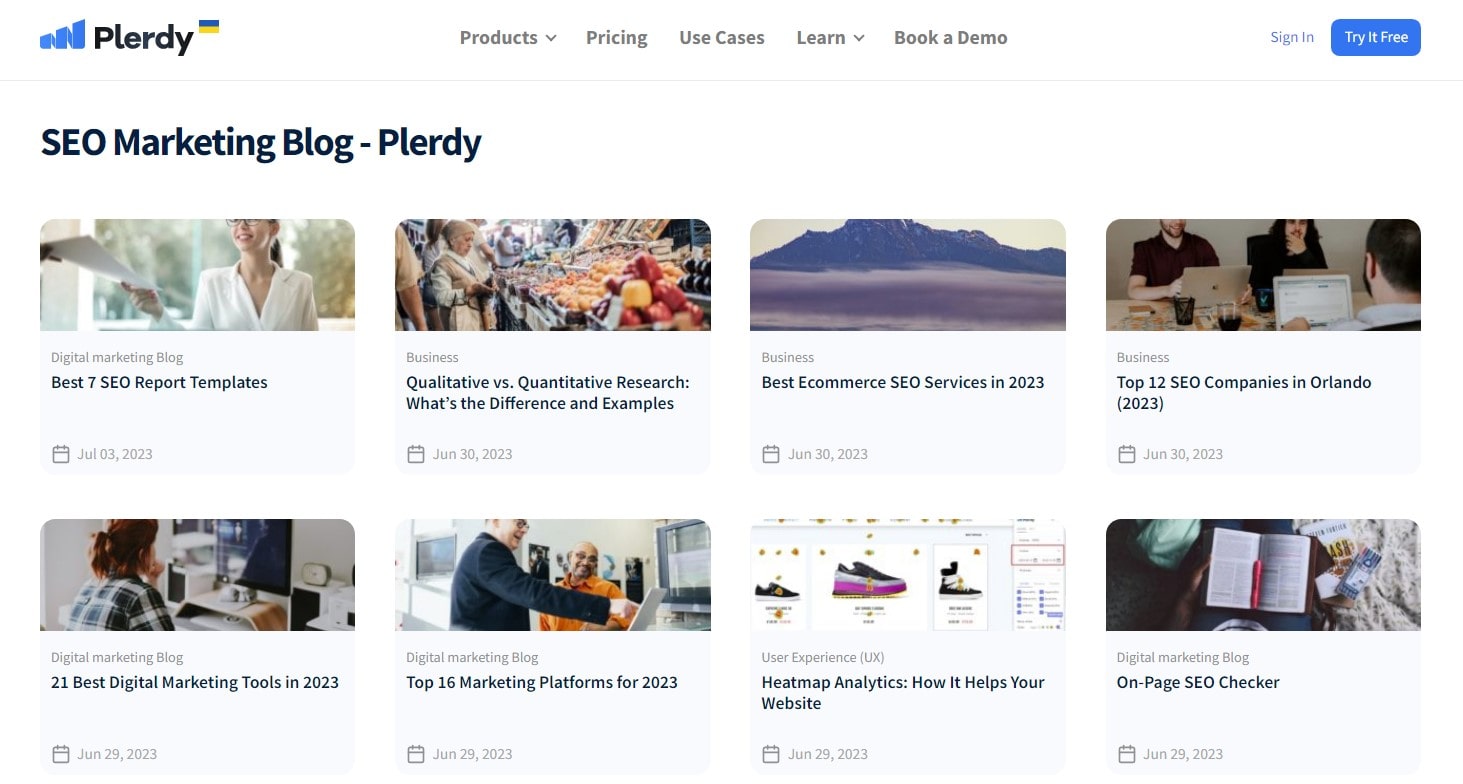
Content Marketing – the art of conveying your brand’s message through valuable and engaging content – has emerged as a potent marketing strategy. This marketing approach weaves your product or service into informative, compelling narratives that connect directly with the customer.
Instead of hard-selling your offerings, Content Marketing lets you subtly lead customers down the conversion path – weaving your product into stories they can relate to, learn from, and ultimately act upon.
Here are some critical elements of successful Content Marketing:
- Crafting high-quality blog posts that offer real value to the reader.
- Creating engaging videos that bring your brand to life.
- Publishing infographics that visualize complex information.
- Distributing newsletters to keep your audience updated.
A notable example of Content Marketing done right is HubSpot. The company consistently provides insightful blog posts, eBooks, and webinars to educate its audience about inbound marketing and sales. These resources don’t push their products aggressively but subtly demonstrate their value, building customer trust.
By integrating Content Marketing into your overall strategy, you can generate interest, build trust, and foster a loyal customer base while driving your business forward. So dive into Content Marketing, let your story unfold, and watch your brand emerge as a trusted authority in your industry.
7. Social Media Marketing Strategy

Welcome to the era of Social Media Marketing – an engaging and interactive marketing type that brings your brand directly to your customers’ feeds. With the right strategy, your business can tap into the powerful potential of social networks to build a robust online presence and foster lasting relationships with your customers.
Rather than pushing your products, Social Media Marketing encourages a two-way conversation – sparking engaging discussions, answering queries, and reacting to customer feedback in real-time. This approach bridges the gap between you and your customer, making your brand more approachable and relatable.
Key ingredients to stellar Social Media Marketing include:
- Regularly sharing timely, relevant, and engaging content.
- Promptly responding to comments and messages.
- Harnessing user-generated content to highlight your community.
- Regularly evaluating and adjusting your strategy based on analytics data.
When you incorporate Social Media Marketing into your overall plan, you’re not just promoting your brand – you’re initiating a conversation, cultivating relationships, and building a loyal community around your brand. With your customers’ feeds as your stage, let your brand personality shine through every post, every story, and every comment. Make Social Media Marketing your brand’s loyal confidante – and let your brand’s voice echo in the digital corridors of your customers’ lives.
8. Email Marketing Strategy
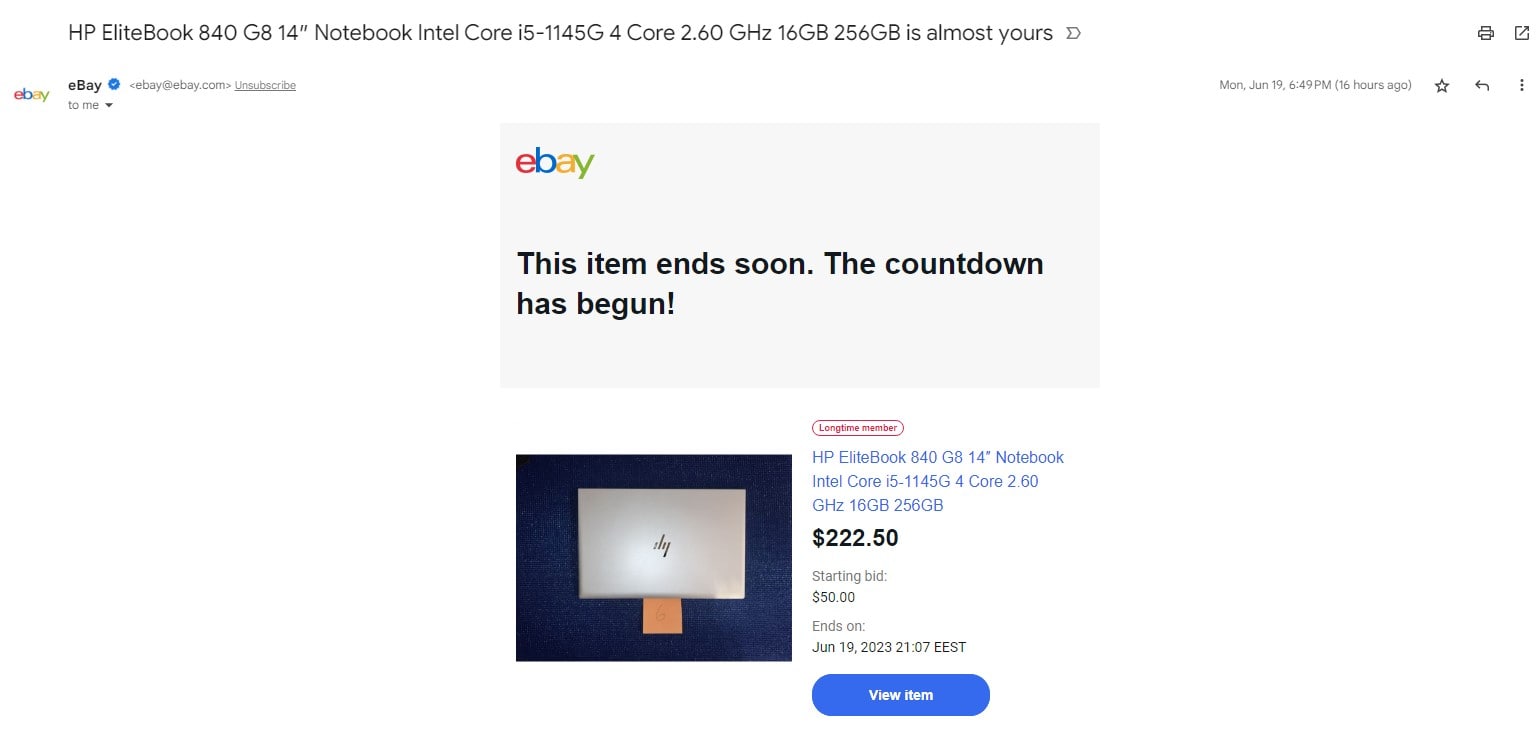
Enter the realm of Email Marketing, an innovative marketing type that delivers your brand’s message directly to your customer’s inbox. This marketing strategy combines the power of personalization with the reach of digital media to create a compelling connection with your audience.
Unlike conventional advertising, Email Marketing doesn’t shout about your products. Instead, it converses – delivering tailored content that resonates with individual customer needs and interests. This strategy helps foster a personal connection, cultivating brand loyalty and customer engagement.
Consider these potent aspects of a winning Email Marketing strategy:
- Personalized emails that address customers by name.
- Segmentation of your email list based on customer preferences.
- Regular newsletters provide updates and valuable content.
- Triggered emails based on customer behavior, like cart abandonment reminders.
A perfect example of a well-executed Email Marketing strategy is the online retailer Amazon. Their personalized recommendations, based on customer buying habits and browsing history, have become legendary – resulting in a significant boost in engagement and conversion rates.
Embrace Email Marketing in your arsenal, and you’ll transform your brand from a faceless entity into a trusted companion in your customer’s inbox. Break through the noise of the digital marketplace, deliver value straight to your customers, and watch as your brand becomes a welcomed presence amidst their daily emails. Leverage the power of Email Marketing to bring your brand closer to your customers – one email at a time.
9. Influencer Marketing Strategy

Unleash the power of Influencer Marketing, a marketing type that leverages trusted voices in your industry to amplify your brand’s message. This strategic approach enables your brand to tap into established followings, foster trust, and drive customer engagement.
Influencer Marketing doesn’t just market your products; it tells a story – showcasing your brand through authentic experiences and organic content. This strategy allows you to connect with customers in a trusted, relatable context that drives action and boosts brand loyalty.
Key elements of a successful Influencer Marketing strategy include:
- Choosing influencers who align with your brand values.
- Crafting collaborative content that appeals to their followers.
- Offering exclusive promo codes or offers through the influencer.
- Monitoring performance to optimize future collaborations.
For example, take Daniel Wellington, a popular watch brand that skyrocketed through effective Influencer Marketing. By partnering with influencers on Instagram, they turned their elegant timepieces into must-have accessories, proving the power of this marketing approach.
By integrating Influencer Marketing into your strategy, you can turn influencers into brand advocates, their followers into potential customers, and their endorsements into measurable results. Harness the sway of influential voices, let them tell your brand’s story, and sit back as your brand resonates within their follower base – driving growth and fostering brand loyalty.
10. Search Engine Optimization (SEO) Strategy
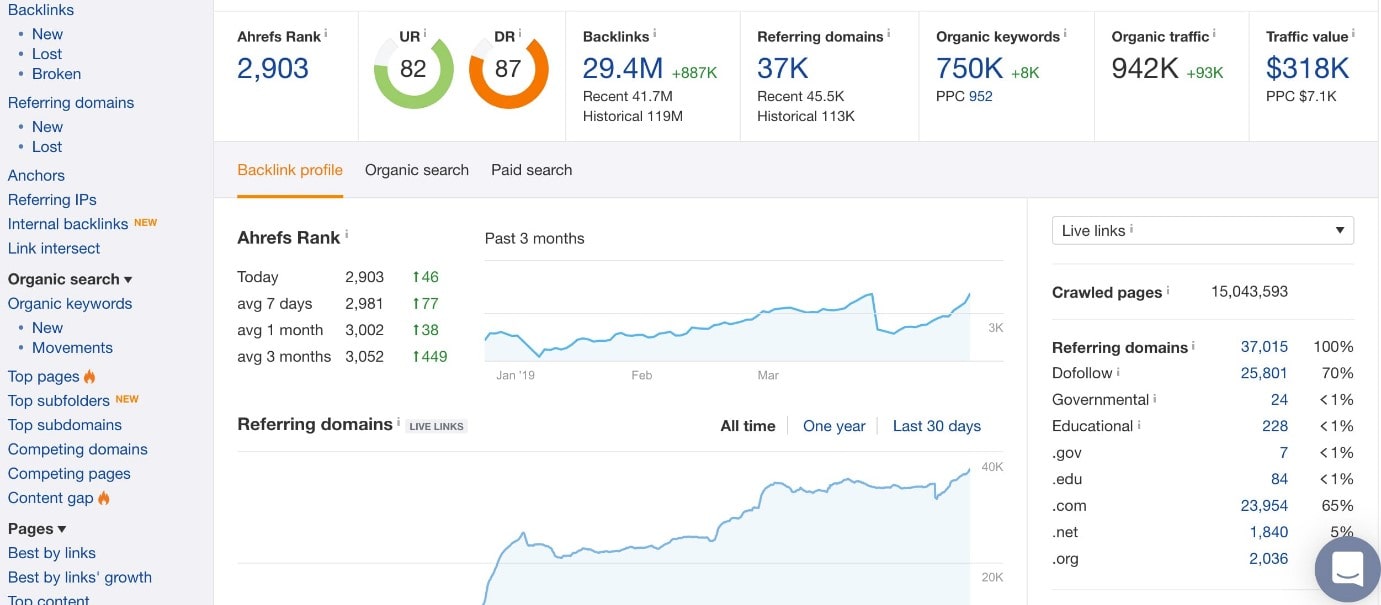
Introducing Search Engine Optimization (SEO) – a crucial marketing type that elevates your brand’s visibility in the digital landscape. This strategy ensures your brand surfaces at the top of search results, bringing your content closer to potential customers and driving organic traffic to your website.
SEO doesn’t just enhance your online presence; it builds a digital pathway – guiding customers from their search query straight to your content. This strategy operates on the principles of relevance and value, ensuring that your brand meets your customer right at the moment of their need.
Effective SEO strategy revolves around these key tactics:
- Incorporating relevant keywords in your content and metadata.
- Optimizing website loading speed and mobile friendliness.
- Building high-quality backlinks from reputable sources.
- Regularly updating your website with fresh, valuable content.
Take, for instance, Zappos, an online retailer that leverages SEO to its advantage. They use keyword-rich product descriptions and an optimized site structure, increasing organic traffic.
Deploying SEO as part of your marketing strategy allows your brand to emerge from the shadows of anonymity into the spotlight of search results. With SEO at the helm, your brand becomes a beacon in digital content, drawing in customers and converting queries into connections. So embrace SEO, let it guide your digital journey, and prepare to mark your presence in the vast digital universe.
11. Pay-Per-Click (PPC) Advertising

Pay-Per-Click (PPC) Advertising stands as a powerful cog in the complex machinery of marketing strategies. This approach allows brands to purchase visits to their sites directly instead of earning them organically, setting a price on each click from a potential customer. Harnessing PPC Advertising successfully can instantly skyrocket your visibility, placing your brand on the pedestal in search engine results.
Here’s what makes PPC Advertising a good marketing strategy:
- Immediate Results: Unlike other strategies, PPC promises rapid engagement. You set up your campaign, and voila! Your ads are live and gathering clicks.
- Targeted Reach: PPC lets you pinpoint your audience. Be it demographics, location, or interests – you can tailor your reach to the finest details.
- Measured ROI: With PPC, every penny counts – literally. You get to know the cost of each click, giving you a clear picture of your return on investment.
Leveraging a PPC marketing strategy is like sailing – you control the sails, the wind is your budget, and the sea is the vast pool of potential customers. Navigate wisely, and you’ll reach the shores of success. But remember, the journey matters as much as the destination. So, analyze, optimize, and steer your campaign with a keen eye. Embrace the dynamism of PPC and watch your brand shine in the digital skyline.
12. Affiliate Marketing Strategy

In the dynamic arena of marketing types, Affiliate Marketing has proven to be a strategic powerhouse, creating a win-win situation for brands and influencers alike. This performance-driven strategy engages customers via trusted sources, leveraging relationships to promote brand awareness and drive sales.
An effective Affiliate Marketing strategy includes the following:
- Crafting appealing affiliate programs to encourage more sign-ups.
- Providing affiliates with marketing materials to promote your brand effectively.
- Regularly tracking and optimize your affiliate campaigns based on performance metrics.
When orchestrated correctly, Affiliate Marketing goes beyond being just another advertising type – it transforms into a powerful customer acquisition tool. It enables your brand to leap off the shelves and into the spotlight, engaging customers in spaces they know and trust. Affiliate Marketing propels your brand in this synergy of trust and visibility, driving customer engagement and boosting conversions.
13. Relationship Marketing Strategy
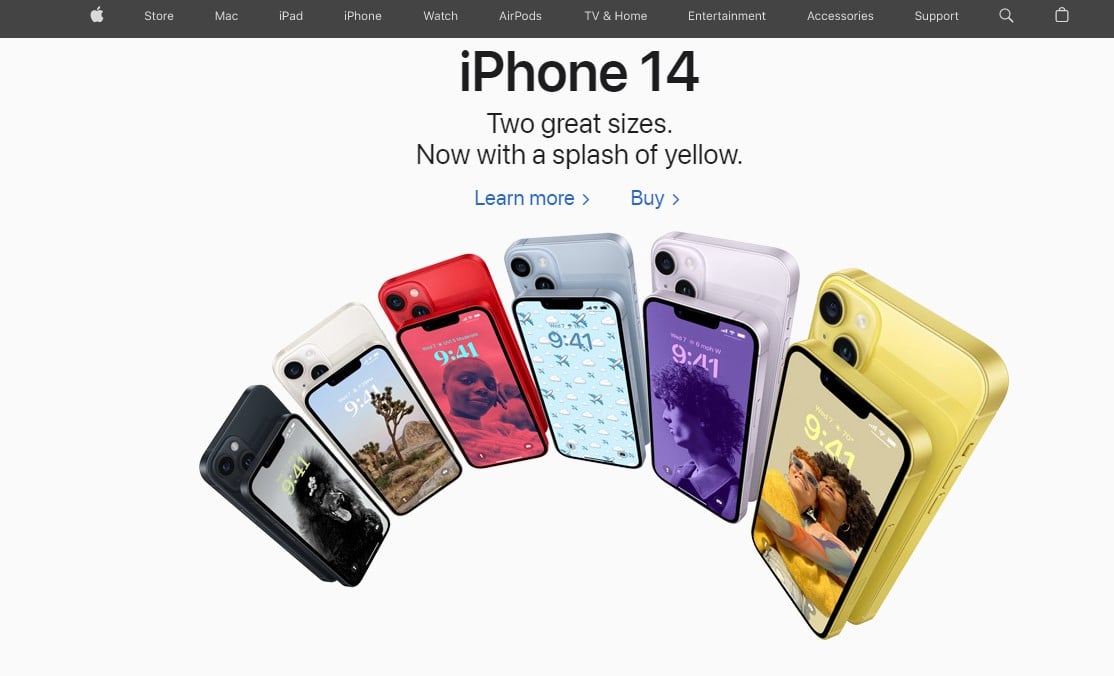
Relationship Marketing is the key to creating lasting connections with customers in the broad spectrum of marketing strategies. It doesn’t simply aim for a single purchase – it entwines your brand and customer in an enduring dance of loyalty and mutual benefit.
Consider Relationship Marketing as a dance instructor – guiding your brand and customers in a rhythm of trust, understanding, and repeated transactions.
Hallmarks of a successful Relationship Marketing strategy include:
- Delivering exceptional customer service – exceeding expectations to foster satisfaction.
- Personalizing communication – tailoring messages that resonate with each individual.
- Offering loyalty programs – rewarding repeat customers with exclusive perks.
- Soliciting customer feedback – demonstrating you value their input and are ready to improve.
Starbucks stands out as a prime example of Relationship Marketing at work. Their Starbucks Rewards program, with its personalized deals and birthday treats, cultivates loyalty and repeat business – it’s no surprise they’ve danced their way into the hearts of coffee lovers worldwide.
Relationship Marketing pivots the focus from mass appeal to individual attention, ensuring customers feel valued. This type of marketing strategy banks on the knowledge that a satisfied customer will become a repeat customer and an ambassador of your brand. In a world overrun with fleeting digital impressions, the beauty of Relationship Marketing lies in its focus on creating connections that stand the test of time.
14. Guerrilla Marketing Strategy

Guerrilla Marketing, an unconventional marketing strategy, thrives on creativity and surprise. This tactical approach leans into shock value to generate buzz, creating a memorable experience for the customer.
Think of Guerrilla Marketing as the flash mob of the marketing world – unpredictable, dynamic, and leaving a lasting impression.
Key components of successful Guerrilla Marketing strategies include:
- Unconventional locations – positioning your message where it’s least expected.
- High-energy engagements – capturing attention with a bang.
- Creativity – putting a unique spin on traditional marketing tactics.
- Budget-friendly tactics – achieving maximum impact with minimal resources.
A classic example of Guerrilla Marketing is the Ikea subway makeover in Paris. They transformed a typical, dull subway car into a cozy living room with stylish Ikea furniture – a dash of domestic bliss amid the daily commute.
The beauty of Guerrilla Marketing lies in its ability to disrupt the ordinary and make a striking statement. This marketing strategy thrives on surprise, using unexpected venues or methods to reach potential customers. A well-executed Guerrilla Marketing campaign captivates the audience and sparks conversations, encouraging word-of-mouth publicity.
In an era where consumers are bombarded with advertisements, Guerrilla Marketing is a breath of fresh air. It dares to color outside the lines, captivating the audience’s attention and breaking through the clutter with unexpected brilliance.
15. Cause Marketing Strategy
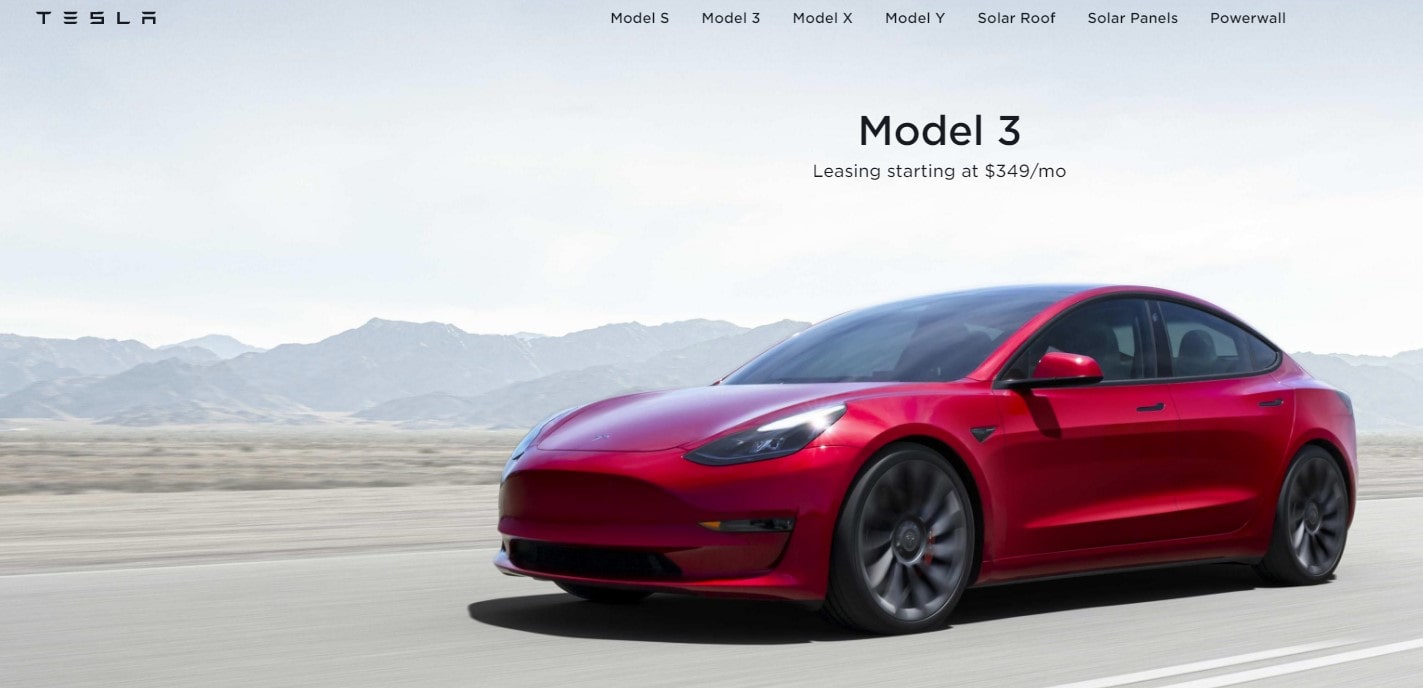
Cause Marketing, a remarkable fusion of brand promotion and social responsibility, melds a company’s mission with a philanthropic cause. This strategy allows companies to elevate their profile while genuinely impacting society.
In this marketing type, businesses collaborate with non-profits or causes, setting the stage for mutual benefits:
- Enhancing brand reputation – by contributing to societal welfare.
- Connecting with customers – by resonating with their values.
- Boosting employee morale – fostering a sense of purpose within the company.
One memorable instance of Cause Marketing is Dove’s ‘Real Beauty’ campaign. It didn’t just sell skincare products—it challenged societal beauty standards, promoting body positivity.
Harnessing the power of Cause Marketing means going beyond mere transactional interactions—it involves creating a relationship with the customer based on shared values and mutual respect. This strategic approach fosters brand loyalty and strengthens the bond between a business and its customer base.
Cause Marketing is a beacon of integrity and purpose in the fast-paced marketing world. By adopting this strategy, businesses can transcend traditional marketing paradigms, making their mark on the balance sheet and society. The potency of Cause Marketing lies in its capacity to cultivate trust and goodwill, helping brands to thrive in today’s value-driven consumer landscape.
16. Viral Marketing Strategy
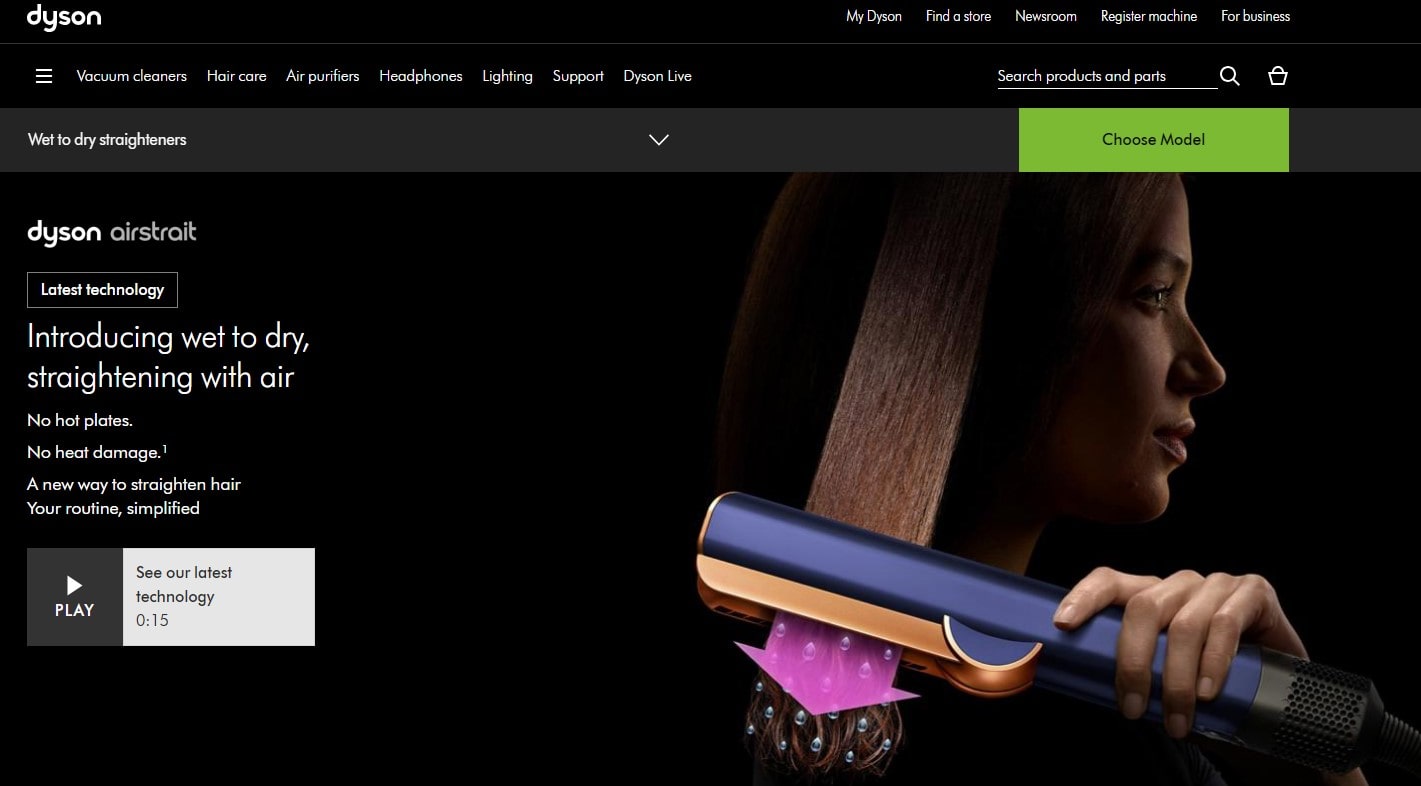
In digital marketing, Viral Marketing has swiftly emerged as a high-impact strategy to engage customers. It embodies the idea of sparking conversations – crafting compelling content that people can’t help but share.
This marketing type generates exponential growth in brand exposure through:
- Intriguing content – that piques curiosity and triggers an emotional response.
- Networking effect – utilizing social media channels to reach a wider audience rapidly.
- Brand engagement – fostering a deeper connection with customers.
The “Ice Bucket Challenge” for ALS awareness is a fascinating example of Viral Marketing. It wasn’t just about pouring cold water – it created a global movement, compelling everyone, from commoners to celebrities, to join in and share.
Executing Viral Marketing strategies requires deeply understanding your target customer’s values, interests, and online behavior. Crafting content that resonates with a target audience and sparks an emotional response is key to unlocking the immense potential of this approach.
As we navigate the digital transformation era, Viral Marketing stands out as a beacon for businesses seeking to penetrate the digital noise, make a lasting impression, and cultivate a loyal customer base. Through Viral Marketing, businesses can tap into the power of social sharing, making their message resonate far and wide in a digitally interconnected universe.
17. Word-of-Mouth Marketing Strategy
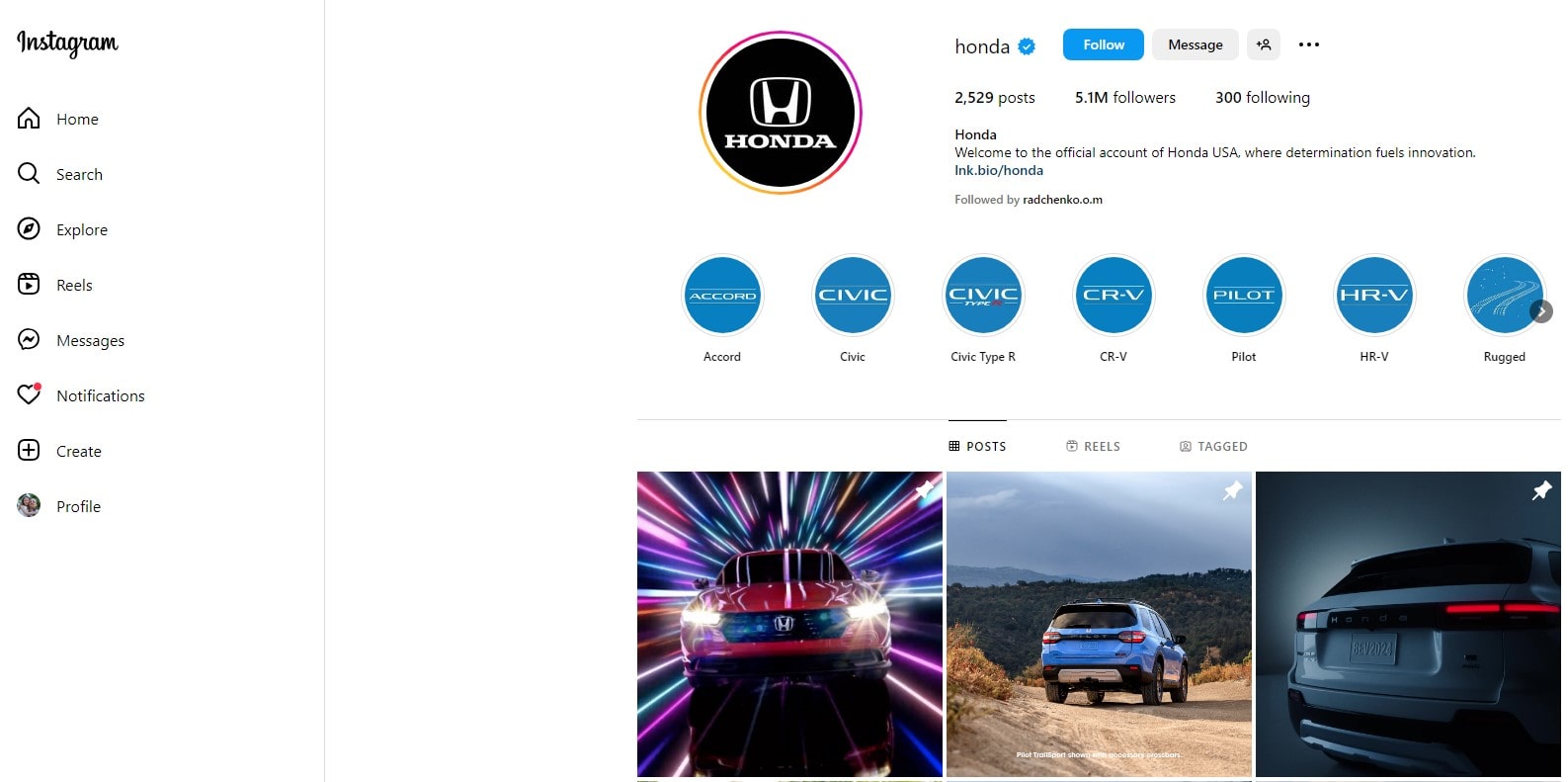
Diving into the deep pool of marketing types, Word-of-Mouth Marketing stands out – like a lighthouse in the dark. It’s an age-old strategy, yet ever so relevant today, as trust continues to be the cornerstone of customer relationships.
Word-of-Mouth Marketing is all about harnessing the power of personal recommendations, providing an authentic touch. It encompasses:
- Stellar customer experiences – creating memorable interactions that customers can’t resist sharing.
- Referral programs – incentivizing existing customers to bring in new ones.
- Influencer partnerships – leveraging the sway of popular figures to reach their followers.
A shining example of Word-of-Mouth Marketing is the exponential growth of Dropbox. They leveraged an effective referral program – offering extra storage space for every referred sign-up – catapulting their customer base to new horizons.
Crafting a successful Word-of-Mouth Marketing strategy demands an unwavering focus on customer satisfaction. It’s about delighting the customer at every touchpoint, so much so they can’t help but share their positive experiences.
As the digital landscape continues to evolve, the authenticity of Word-of-Mouth Marketing remains unchanging. As a result, businesses leveraging this strategy find themselves in a virtuous cycle of customer acquisition, satisfaction, and loyalty – accelerating growth and propelling the brand into the spotlight.
Bottom Line
Navigating through the labyrinth of marketing strategies, you’ve discovered the immense variety that lies within. Now armed with knowledge about 17 significant types – from agile Email to dynamic Influencer Marketing – you’re ready to tackle your business objectives. Let’s not forget the strategy you choose needs to fit your brand’s persona like a glove, mirroring its unique character and core values.
We’ve journeyed together from the known shores of Content Marketing, sent explorative probes into the neuromarketing universe, and examined how even whispers can turn into a roar with Word of Mouth strategies. Even though the terrain is vast, remember – success often dwells in niches, where few dare to venture.
Each marketing strategy we’ve outlined presents an opportunity for your business to show its distinct voice. Be it through the artful placement of ads, the human touch in face-to-face events, or a well-crafted newsletter – the possibilities are vast. But don’t forget to measure your success – numbers speak louder than words regarding strategy effectiveness.
To assist in your journey, consider Plerdy tools – your reliable companions for UX & SEO analysis. In conclusion, it’s about your chosen strategy and how you implement measure and improve it. As you’ve learned, marketing is a dynamic field. So, keep your strategies flexible, be open to change, and, most importantly, keep learning. ⚡
